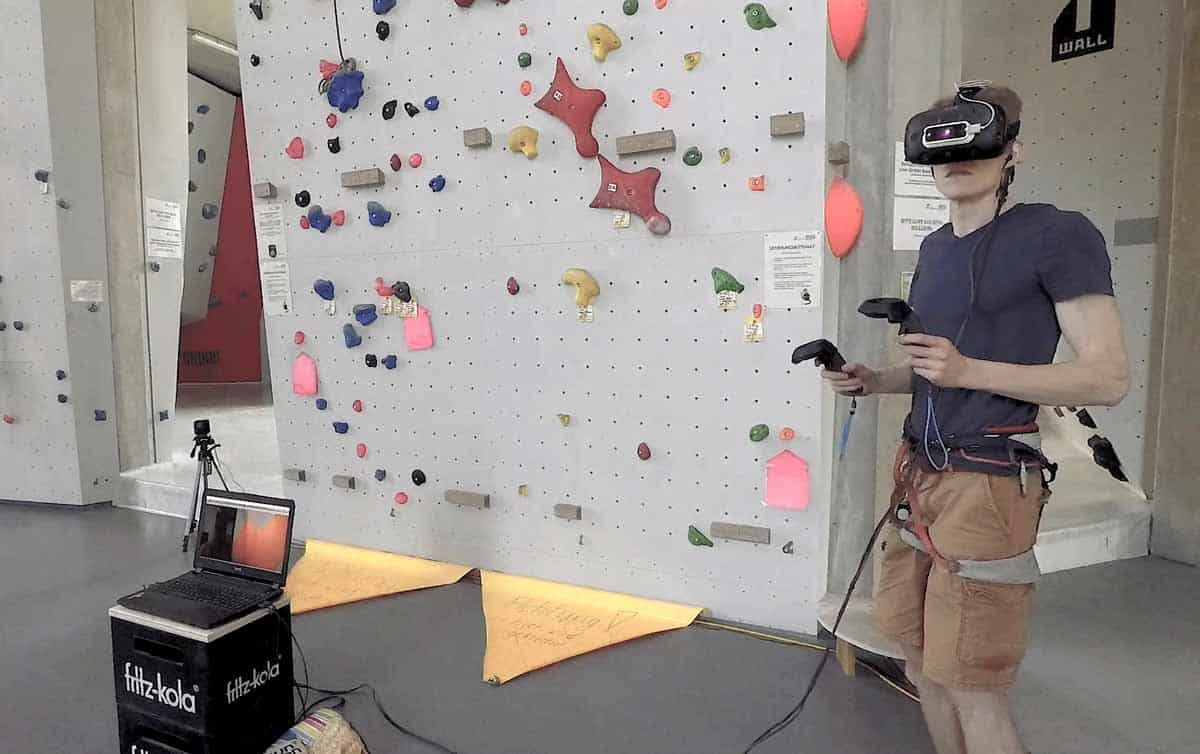
Admittedly, an enthusiastic climber rarely has fear of heights. But: he is afraid to fall and get injured. Depending on the climber’s level of expertise, this fear appears in every person at a different height. A beginner may already feel it a few meters above the ground, while an experienced climber shows quite a different tolerance threshold.
Exposure as an Approach
In order to overcome fear, there is a golden method in sports, that comes from psychotherapy: Exposure. The “patient” or athlete repeatedly exposes himself or herself to the situation that causes him or her anxiety. And the good thing about the fear of heights – even if in this case it is not an irrational phobia but is based on the instinct of self-preservation – can be treated particularly successfully. Through constant confrontation, the patient learns that his life is not threatened immediately just because he is a few meters above the ground and the depth lies beneath him. Ultimately, overcoming fear is a matter of practice that requires a lot of patience but is crowned with success.
But be warned against too much ambition: Those who leave their comfort zone too drastically risk panic attacks. And these are accompanied by heart palpitations, shortness of breath, outbreaks of sweat and shaky knees. Symptoms that are quite counterproductive for climbing rock faces. Especially since this bad feeling is also immediately memorized for the next tour. Thus, it makes sense to have a system that comfortably secures the comfort zone. One that guarantees the best possible therapy – or in this case the best possible training success.
Three Test Arrangements
And this is exactly what the enthusiastic climber, student and scientist of the Technology Centre for Computer Science and Information Technology at the University of Bremen, Peter Schulz, is working on. For his master thesis entitled “Effects of Physical Interaction While Sport Climbing in Virtual Reality”, he investigated the extent to which Virtual Reality (VR) can overcome fear of heights in climbing. For this purpose, he conducted three different test attempts with a total of 28 male and female climbers, some of whom were high-performers and some averagely good. All three were to represent climbing at a height of ten meters. He set up his research laboratory in the climbing center of the DAV Bremen.

On the one hand, the test persons climbed in reality and with safety by top rope. In the second test arrangement, they were on real grips while climbing and were on the same route but close to the ground. The special thing about this situation, was that the test persons were able to get off at any time without any problems, but at the same time had a well-founded fear of falling due to free climbing (Free Solo) in combination with the VR pictures of ten meters climbing height. In the third test arrangement, the test persons only climbed virtually. They were only wearing the VR glasses and had controllers, as they are known from game consoles.
VR with Simultaneous Physical Activity Realistic
In the experiment, which was supervised by Professors Dr. Rainer Malaka and Dr. Johannes Schöning, Schulz was primarily concerned with creating the most realistic impression possible of activities at heights. He wanted to use sensors attached to the test persons to observe the sensation of anxiety and stress. For his investigations, the student then conducted personal interviews. He also recorded heart rate (HR), pulse, rate variability (HRV), resorption rate (RR) and electrodermal activity (EDA), meaning increased sweat production with increased skin conductivity.
Schulz summarizes the results as follows:
We could observe that some effects occur at ground level with Virtual Reality, which without VR only occur at heights. This created a stress level for the climber that corresponds to that of real climbing.”
The triggered feeling of height is therefore related to two factors: The first is physical activity during climbing, and the second is virtual reality, which virtually raises people to the heights. “We were also able to show that something that can be touched is very important – real grips”, says Schulz. Climbing only with the controllers seemed less realistic for the users.
Further Steps Planned
The VR climbing goggles thus seem interesting for everyone who wants to raise his level in the vertical, but has not yet been able to make it, due to fear. This can be a beginner, but also an advanced climber. First of all, it is planned to integrate the findings into effective training plans for climbers. For this, tests will be carried out with the athletes.
Schulz contributed his many years of climbing know-how to the research work, as well as his experience as a youth leader at the DAV – where he is intensively involved in imparting climbing knowledge. The two experts, Prof. Dr. Rainer Malaka and Prof. Dr. Johannes Schöning, are also climbers. At the same time, they are intensively involved in the research areas of digital media and human-machine interaction, including VR. The entire work can be read here.

